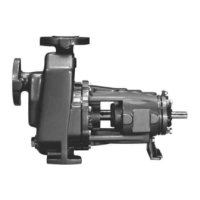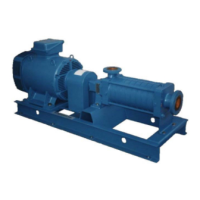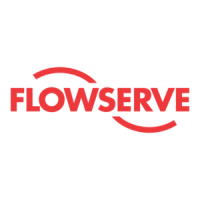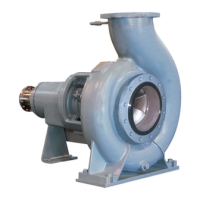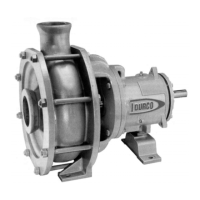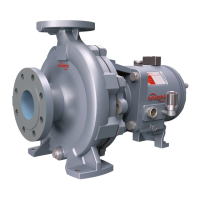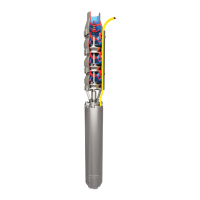CS USER INSTRUCTIONS ENGLISH 923CSE001 - 08/03
Page 8 of 66
®
Temperature
class to
prEN 13463-
1
Maximum
surface
temperature
permitted
Temperature limit of
liquid handled (*
depending on
material and
construction variant
- check which is
lower)
T6
T5
T4
T3
T2
T1
85 °C (185 °F)
100 °C (212 °F)
135 °C (275 °F)
200 °C (392 °F)
300 °C (572 °F)
450 °C (842 °F)
Consult Flowserve
Consult Flowserve
115 °C (239 °F) *
180 °C (356 °F) *
275 °C (527 °F) *
400 °C (752 °F) *
The responsibility for compliance with the
specified maximum liquid temperature is with the
plant operator.
If an explosive atmosphere exists during the
installation, do not attempt to check the direction of
rotation by starting the pump unfilled. Even a short
run time may give a high temperature resulting from
contact between rotating and stationary
components.
Where there is any risk of the pump being run against
a closed valve generating high liquid and casing
external surface temperatures it is recommended that
users fit an external surface temperature protection
device.
Avoid mechanical, hydraulic or electrical overload by
using motor overload trips, temperature monitor or a
power monitor and make routine vibration
monitoring checks.
In dirty or dusty environments, regular checks must
be made and dirt removed from areas around close
clearances, bearing housings and motors.
1.6.4.4 Preventing the build up of explosive
mixtures
ENSURE THE PUMP IS PROPERLY FILLED
AND VENTED AND DOES NOT RUN DRY
Ensure the pump and relevant suction and
discharge pipeline system is totally filled with liquid
at all times during the pump operation, so that an
explosive atmosphere is prevented. In addition it is
essential to make sure that seal chambers, auxiliary
shaft seal systems and any heating and cooling
systems are properly filled.
If the operation of the system cannot avoid this
condition the fitting of an appropriate dry run
protection device is recommended (eg liquid
detection or a power monitor).
To avoid potential hazards from fugitive emissions
of vapour or gas to atmosphere the surrounding
area must be well ventilated.
1.6.4.5 Preventing sparks
To prevent a potential hazard from
mechanical contact, the coupling guard must be
non-sparking and anti-static for Category 2.
To avoid the potential hazard from random induced
current generating a spark, the earth contact on the
baseplate must be used.
Avoid electrostatic charge: do not rub non-metallic
surfaces with a dry cloth; ensure cloth is damp.
The coupling must be selected to comply with
94/9/EC and correct alignment must be maintained.
1.6.4.6 Preventing leakage
The pump must only be used to handle liquids
for which it has been approved to have the correct
corrosion resistance.
Avoid entrapment of liquid in the pump and
associated piping due to closing of suction and
discharge valves, which could cause dangerous
excessive pressures to occur if there is heat input to
the liquid. This can occur if the pump is stationary
or running.
Draining or protecting the pump and ancillary
systems must avoid bursting of liquid containing
parts due to freezing.
Where there is the potential hazard of a loss of a
seal barrier fluid or external flush, the fluid must be
monitored.
If leakage of liquid to atmosphere can result in a
hazard, the installation of a liquid detection device
is recommended.
1.6.4.7 Maintenance to avoid the hazard
CORRECT MAINTENANCE IS REQUIRED
TO AVOID POTENTIAL HAZARDS WHICH GIVE A
RISK OF EXPLOSION
The responsibility for compliance with
maintenance instructions is with the plant
operator.
To avoid potential explosion hazards during
maintenance, the tools, cleaning and painting
materials used must not give rise to sparking or
adversely affect the ambient conditions. Where
there is a risk from such tools or materials,
maintenance must be conducted in a safe area.
It is recommended that a maintenance plan and
schedule is adopted, (see section 6).
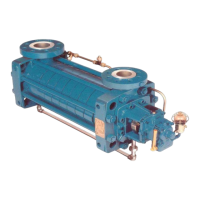
